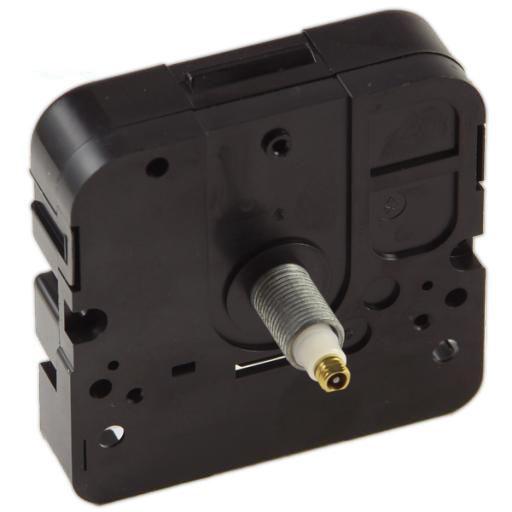Quartz Clock Movements Open Your Vistas

Quartz clock movements are the modern digital equivalent of standard, mechanical control centers for timekeeping. Yet quartz clock movements (likewise referred to as clock motors) have no springs, weights, pulley-blocks, or gears to track time; rather, the quartz crystal creates a stream of pulses that are really quickly and very constant, suggesting that counting and subdividing the pulses offers a precise procedure of elapsed time. Allow us see just how these splendid tools can open up a new globe to you.
Non-quartz clock movements operate mechanically, using rotational force to transform a flywheel and a series of gears to establish specific time devices (i.e., secs). Without guideline, the flywheel would certainly rotate too fast, which is where pendulums and escapement devices come in. The pendulum is restricted to turn one degree in half a 2nd, and the gear network equates the oscillation into secs, min, and hours.
Modern electronic motors work identically-- at least to the onlooker-- although a totally different approach is used to obtain the very same outcomes. The first thing one requires to understand is that quartz crystals naturally shake at their resonating regularities when a voltage decline is applied to them. Next, one must recognize that the whole factor of clocks is to track elapsed time (resetting every 12 or 1 day), which whether this is done mechanically or digitally is a non-issue.
Nonetheless, the digital strategy has many benefits that go beyond simply eliminating the mass of flywheels, weights, and gears. Electronic motors basically digitize the entire procedure, converting what made use of to be done in equipment right into software. This gives them much greater flexibility and flexibility than their mechanical equivalents, and in fact they can do virtually whatever capability can be dreamed up since programming has no hardware constraints.
For example, suppose we intend to extend the resetting time, or the period at which every little thing wraps around to where it started? Twelve hours and twenty-four hours are prominent options, however there's nothing protecting against one from going a complete week, or perhaps a month!
Obviously, there's no point executing such time expansions if you couldn't show them, suggesting specifically adjusted dials and perhaps an additional hand. For the regular period, the days are printed in the facility of the dial and the (short) additional hand jumps to the next day every 24 hr. Likewise, for once-a-month periods, days of the month are published along the dial's area and a lengthy hand ticks to the following daily.
A cool option "clock" movement that you can get tracks trend level. The only genuine difference is going from a solar cycle to the lunar cycle, which is 1 day and 50 minutes. The motion has to be booted up and adjusted for regional problems, once this is done the trend level will certainly always be precise.
The tide-level activity (which can be combined with normal timekeeping to display time and trend on one face), is a type of lead-in to movements that depart from periodicity. Right here, the thing revealed is a weather condition phenomenon, such as moisture or temperature level, and the single hand revolves between 2 extremes of a scale. Sensors are utilized to identify current worths, and the motor converts the worth into hand setting.
The sharp viewers will certainly understand that we are no longer in the world of quartz movements, as there is no factor to track elapsed time. However the electronic quartz innovation has liberated the imagination to assume in regards to software program rather than hardware.
An intriguing result of all this is that there is a market for clocks and features of the past, such as grandpa clocks with oscillating pendulums. The electronic movements can accommodate such wishes through simulation, although pendulums are no more operating components; this is especially useful for clockmakers that want to restore an old, non-functioning heirloom. It goes without saying, quartz clock movements open your views.





